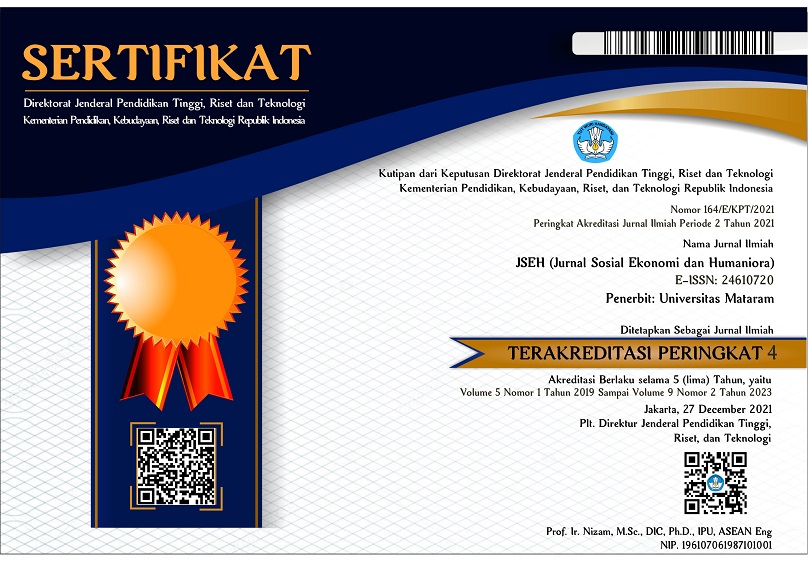Analisis Bibliometrik Pada Riset Keuangan Inklusif Dalam Tiga Dekade
DOI:
https://doi.org/10.29303/jseh.v8i1.51Keywords:
Financial Inclusion, Bibliometrics, Scopus DatabaseAbstract
Research on financial enclusion was first indexed in Scopus in 1984, in the form of a conference paper. This study aims to explain the development of inclusive financial literature in the form of scientific publicist indexed by scopus in the last three decades. The population of this study was recorded as many as 1,681 documents indexed by scopus from 1984 to 2020 in the form of articles, conference papers, book chapters, reviews and other publications. This research includes descriptive quantitative using bibliometric analysis approach. Data is analyzed using VOSviewer software. Research findings based on bibliometric analysis: recorded 3,013 authors, and 4,462 different keywords; Publications relevant to this topic, of which the highest number in 2020 are 372 articles; the most publicity sources containing related topics are Economic and Political Weekly; The most productive author is Munene J.C with 17 documents; The largest number of affiliates come from the Faculty of Finance, Risk Management and Banking, University of South Africa, South Africa. The largest number by author's country of origin is from India. Research conclusions: First, scientific research on inclusive financial topics has experienced very significant developments, especially in the last 1 decade from 2011 to 2020 consistently experiencing growth every year. Second, bibliometric visualization of network maps based on: a) author (document = 22 clusters, country = 12 clusters), b) keywords (10 clusters), c) citations (document =181 clusters, authors = 14 clusters), d) bibliography couplings (document = 104 clusters, author = 3 clusters), and co-citation (cited author = 6 clusters).
References
Atkiinson, A.; Messy, F. 2013. Promoting Financial Inclusion Through Financial Education.pdf. OECD Publishing, 34.
https://doi.org/10.1787/5k3xz6m88smp-en
Bank Indonesia. 2014. Keuangan Inklusif di Indonesia. www.bi.go.id
Ozili, P. K. 2020. Theories of Financial Inclusion. Uncertainty and Challenges in Contemporary Economic Behaviour, 89–115.
https://doi.org/10.1108/978-1-80043-095-220201008
Ran, X., Tan, T., Phan, T. Q., & Keppo, J. 1984. The role of financial literacy in online peer-to-peer lending: An empirical approach. 40th International Conference on Information Systems, ICIS 2019.
Sahay, R., M.Cihak, P.N’Diaye, A.Barajas, S.Mitra, A.Kyobe, Y.N.Mooi, A. R. Y. 2018. Banking of the Future - Finance in the digital Age. SSRN Electronic Journal, 3(July), 16.
Van Eck, N. J., & Waltman, L. 2009. VOSviewer: A computer program for bibliometric mapping. 12th International Conference on Scientometrics and Informetrics, ISSI 2009, 886–897.
Wang, H., Li, C., Gu, B., & Min, W. 1984. Does AI-based credit scoring improve financial inclusion? Evidence from online payday lending.
Downloads
Published
How to Cite
Issue
Section
License

This work is licensed under a Creative Commons Attribution-NonCommercial 4.0 International License.








